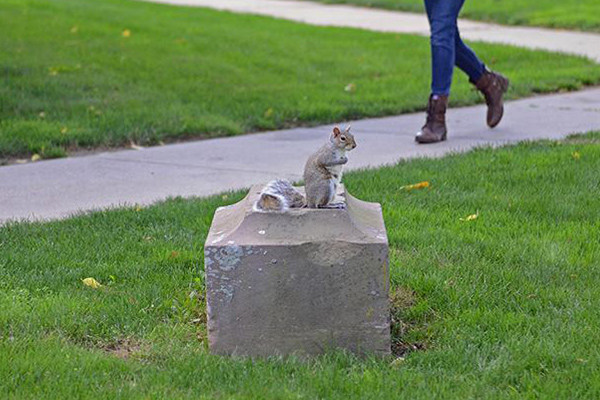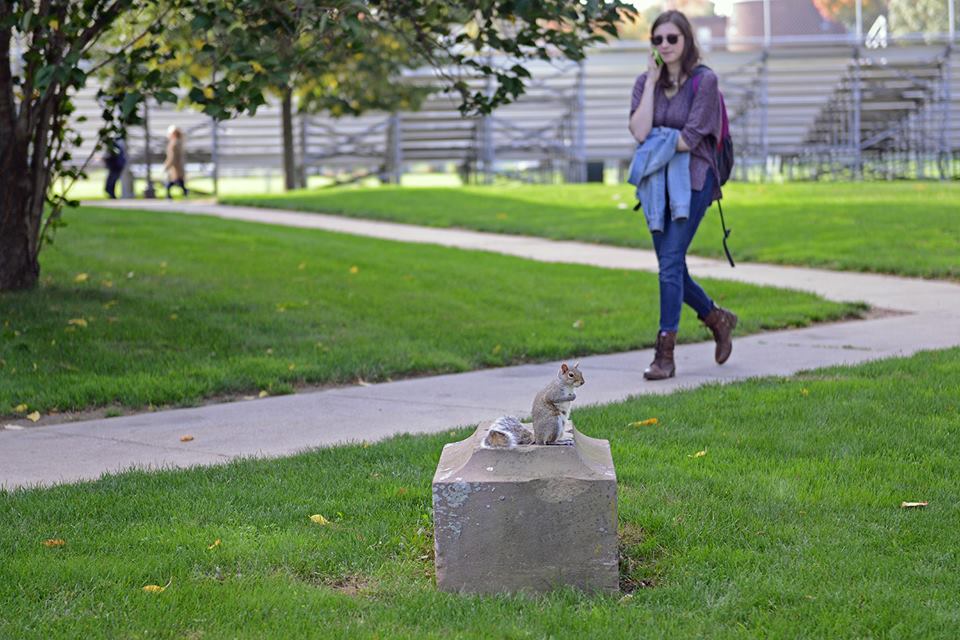What Do the Squirrels Know about the Extended Absence of the Douglas Cannon?


Much has been written about the mysterious Douglas Cannon, a Wesleyan University tradition dating back to the 1860s. During this time, college was in term for the Fourth of July, and a student-led volley of cannon fire was often included in the celebrations. In 1859, Wesleyan’s calendar was altered so that the college was not in session during the Fourth, so the Douglas Cannon was added to the celebration of George Washington’s birthday on February 22, kicked off by a “cannon scrap.”
Cannon scraps came about as an interclass rivalry between the freshman — in charge of firing the cannon volleys in the early morning hours of February 22 — and the sophomores, who attempted to foil the freshman efforts to fire the cannon. In 1869, a heavily-packed cannon charge shattered most of the library’s windows (at that time Rich Hall, which is now the ’92 Theater, housed the library). After this, faculty prohibited firing the cannon, and in 1931 it was filled with lead and mounted to a block of brownstone between Memorial Chapel and South College. The cannon remained there for 26 years, only to be stolen by students in 1957, returned, then stolen again in 1959.
Since its introduction, the Douglas Cannon has been sunk in the Connecticut River, presented to the Russian Mission at the United Nations as a “symbol of peace, brotherhood, and friendship,” appeared unexpectedly in the offices of the managing editor of Life magazine, presented to President Richard M. Nixon as a protest against the war in Vietnam, and baked into Wesleyan’s sesquicentennial birthday cake in 1981. Photographs have been sent depicting the Cannon in London, Paris, and Venezuela.
Though small groups of students have reported spotting it twice in the past decade, the cannon hasn’t been seen publicly on campus since Wesleyan’s 175th commencement in 2007. The pedestal has remained empty, except for the occasional shifty-eyed squirrel who sits on it as if s/he knows something about the cannon’s whereabouts. Perhaps the Douglas Cannon Facebook page will reveal more in time…

